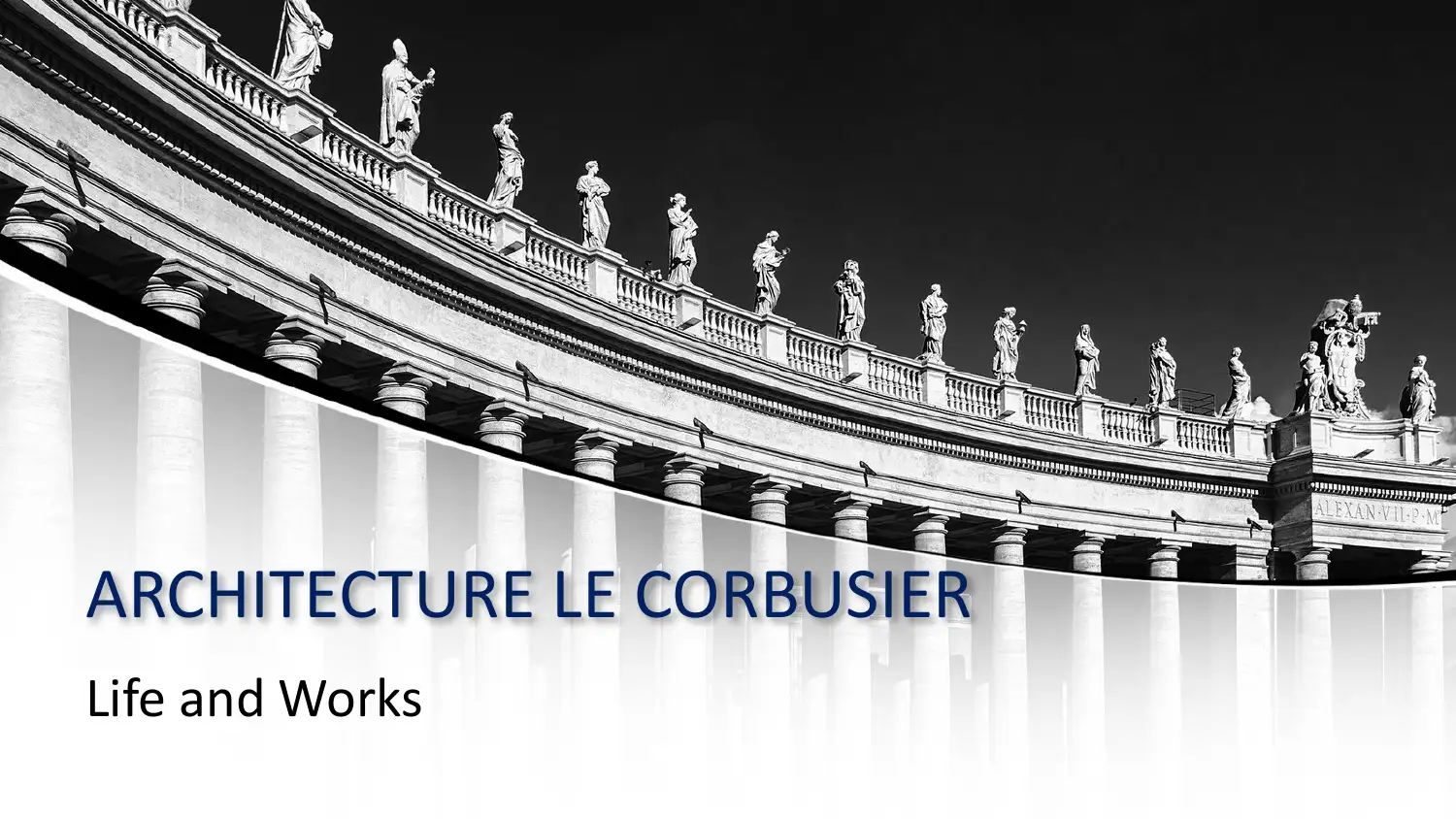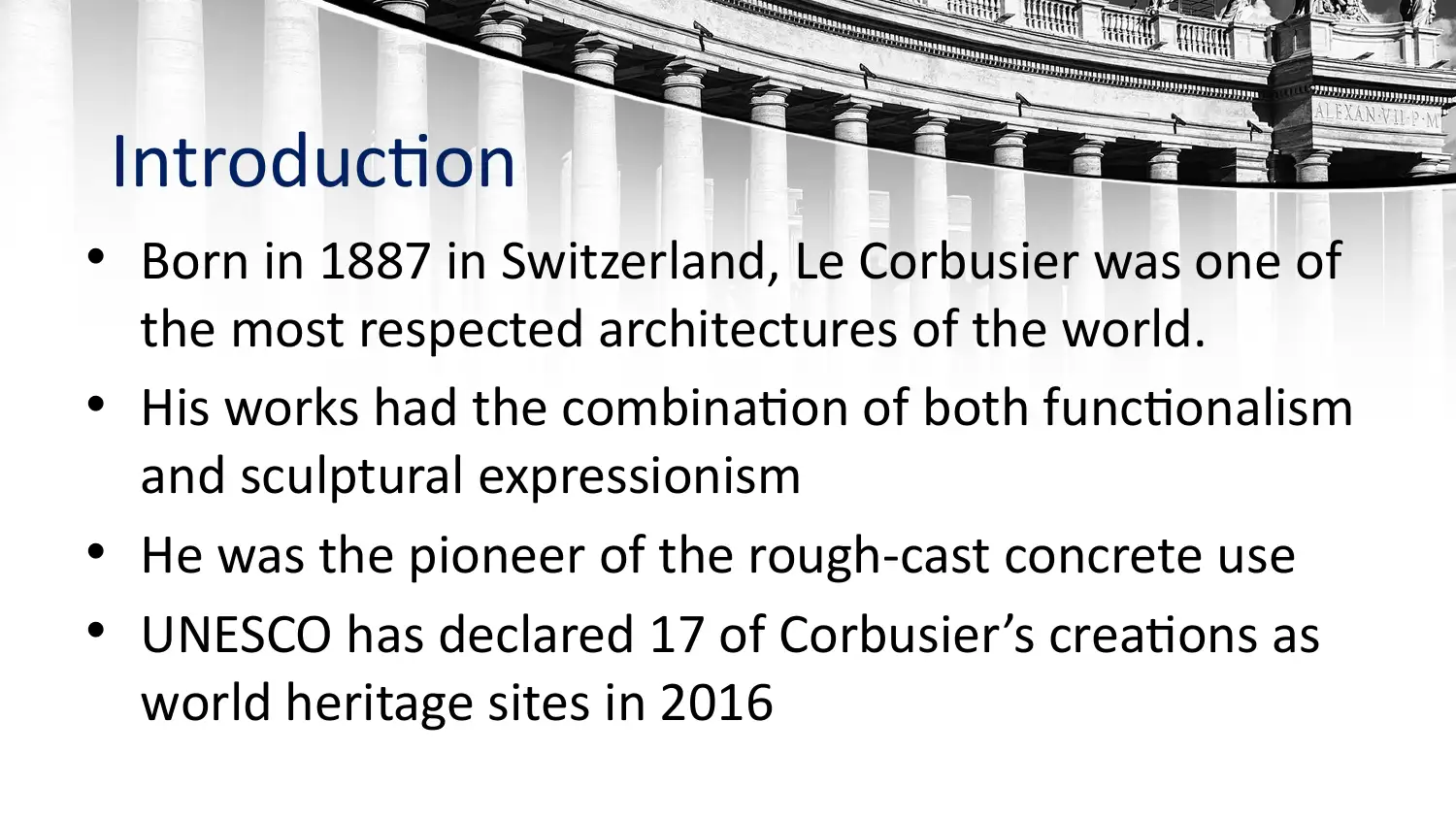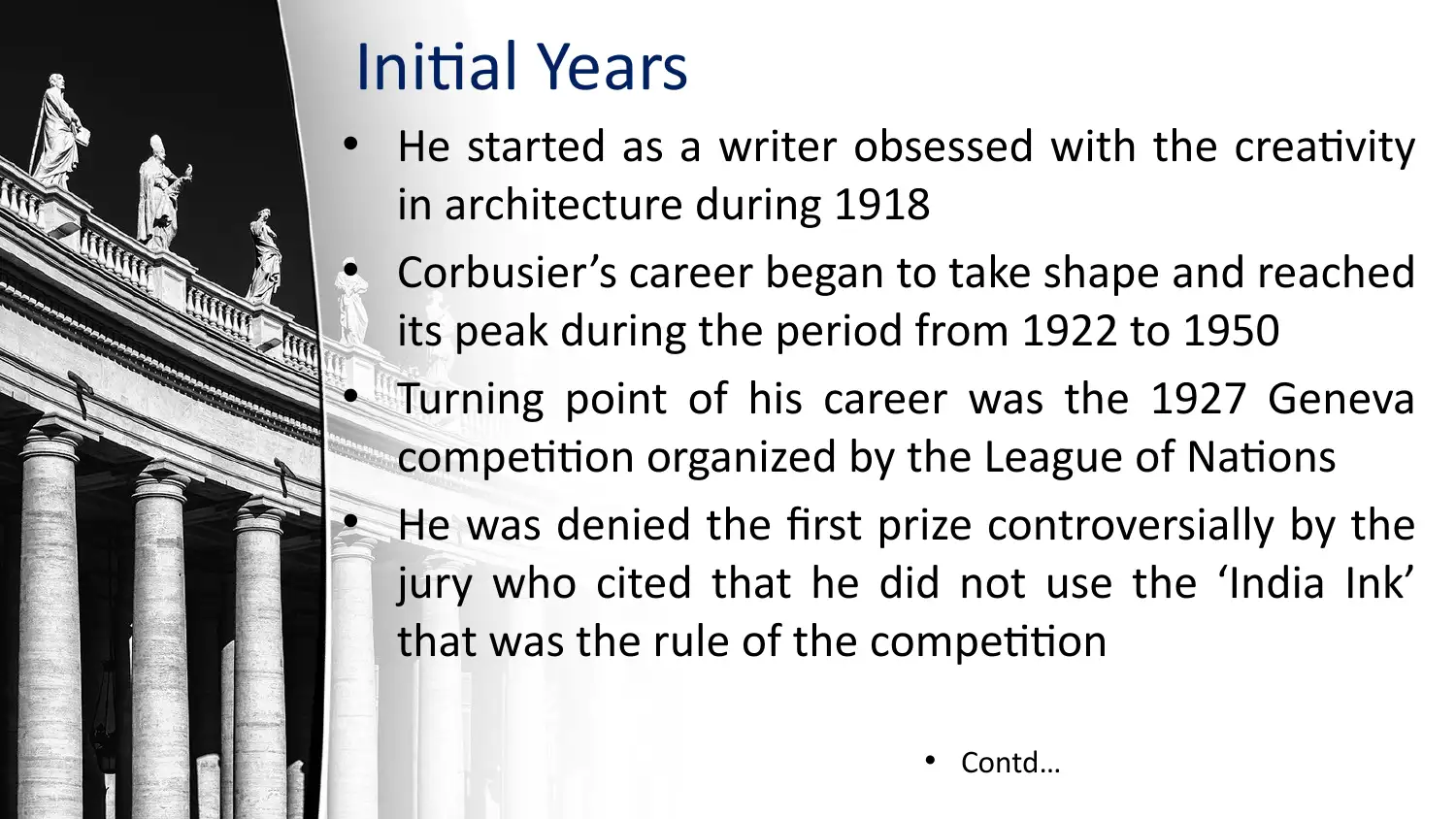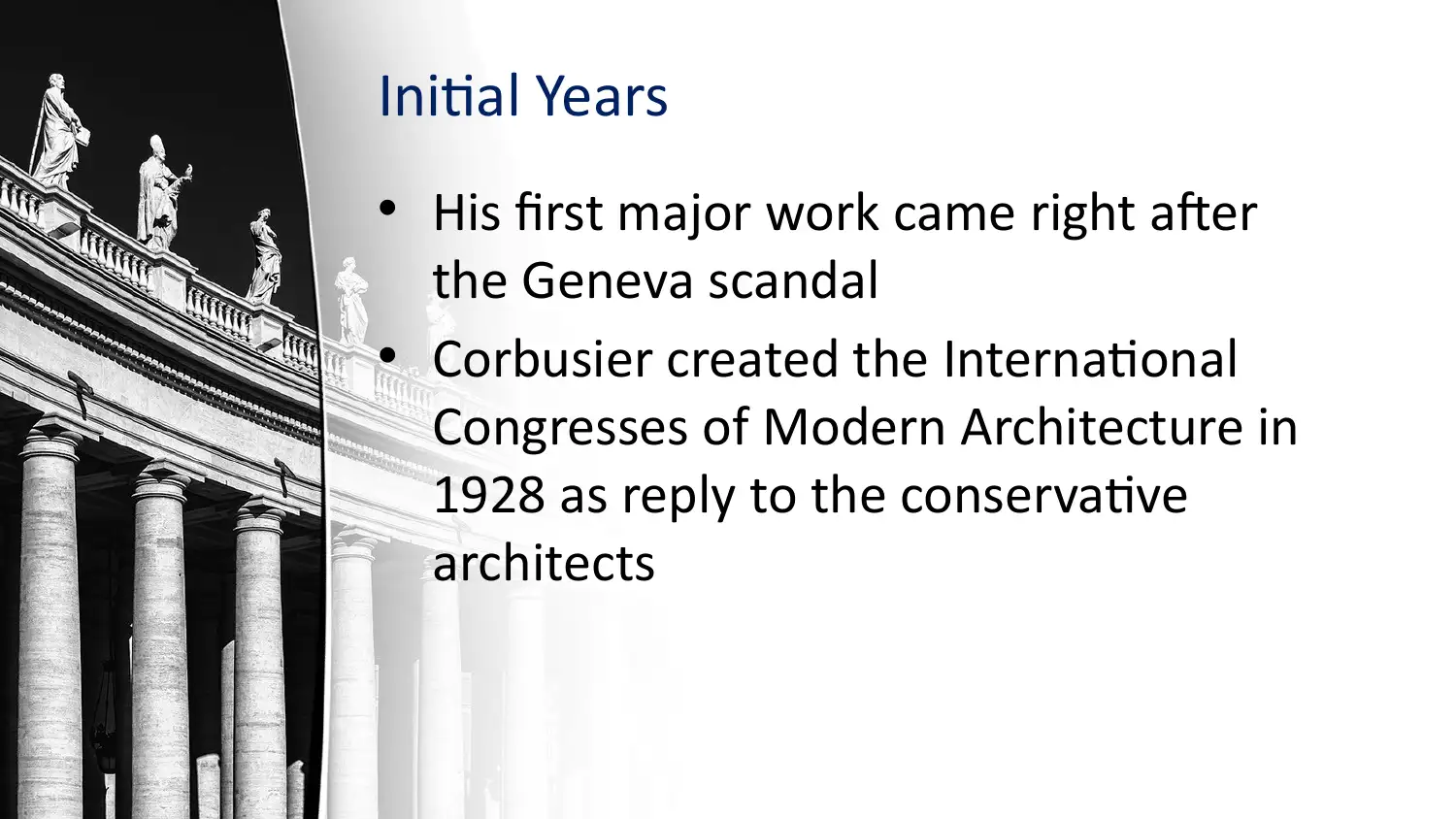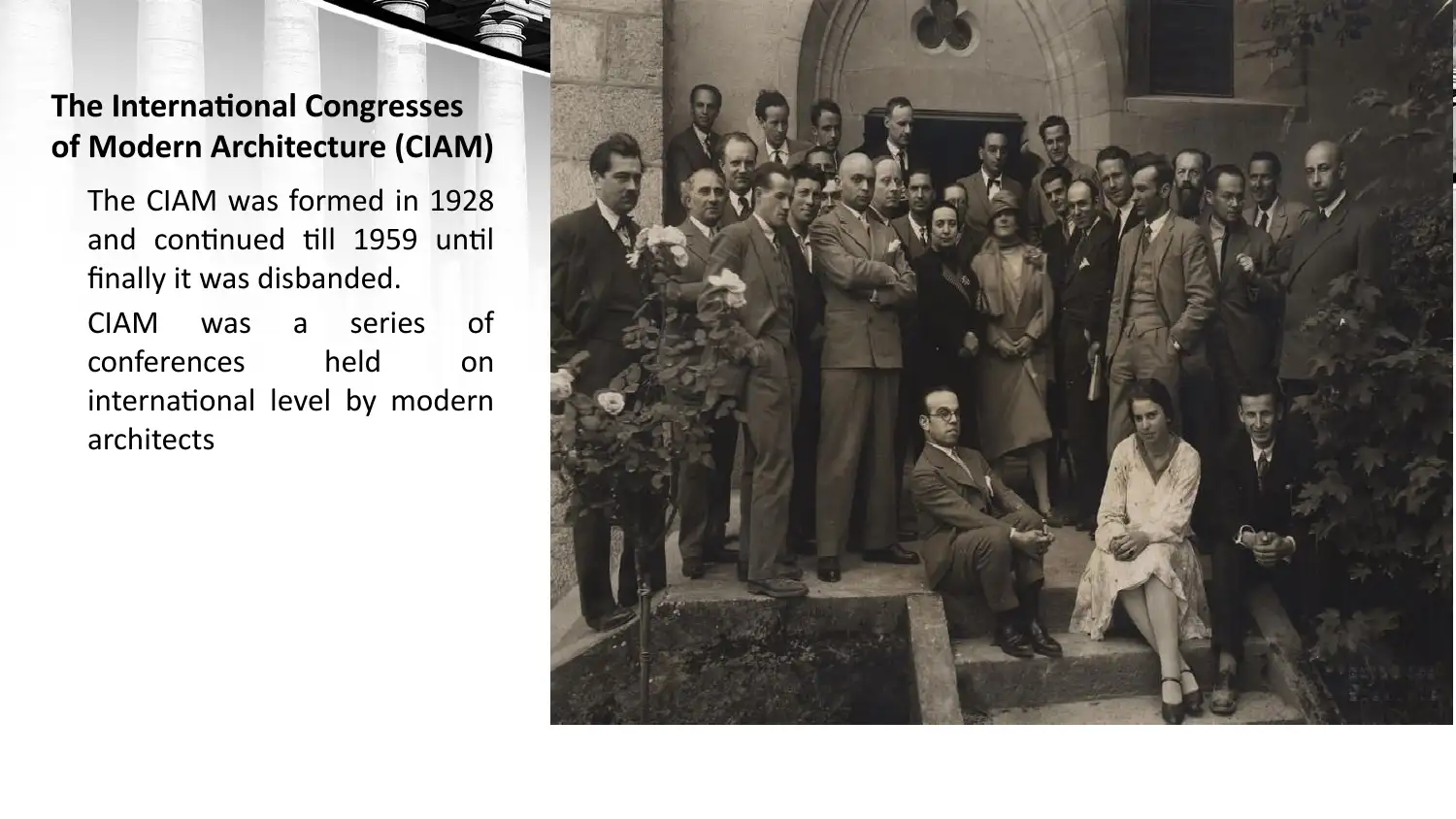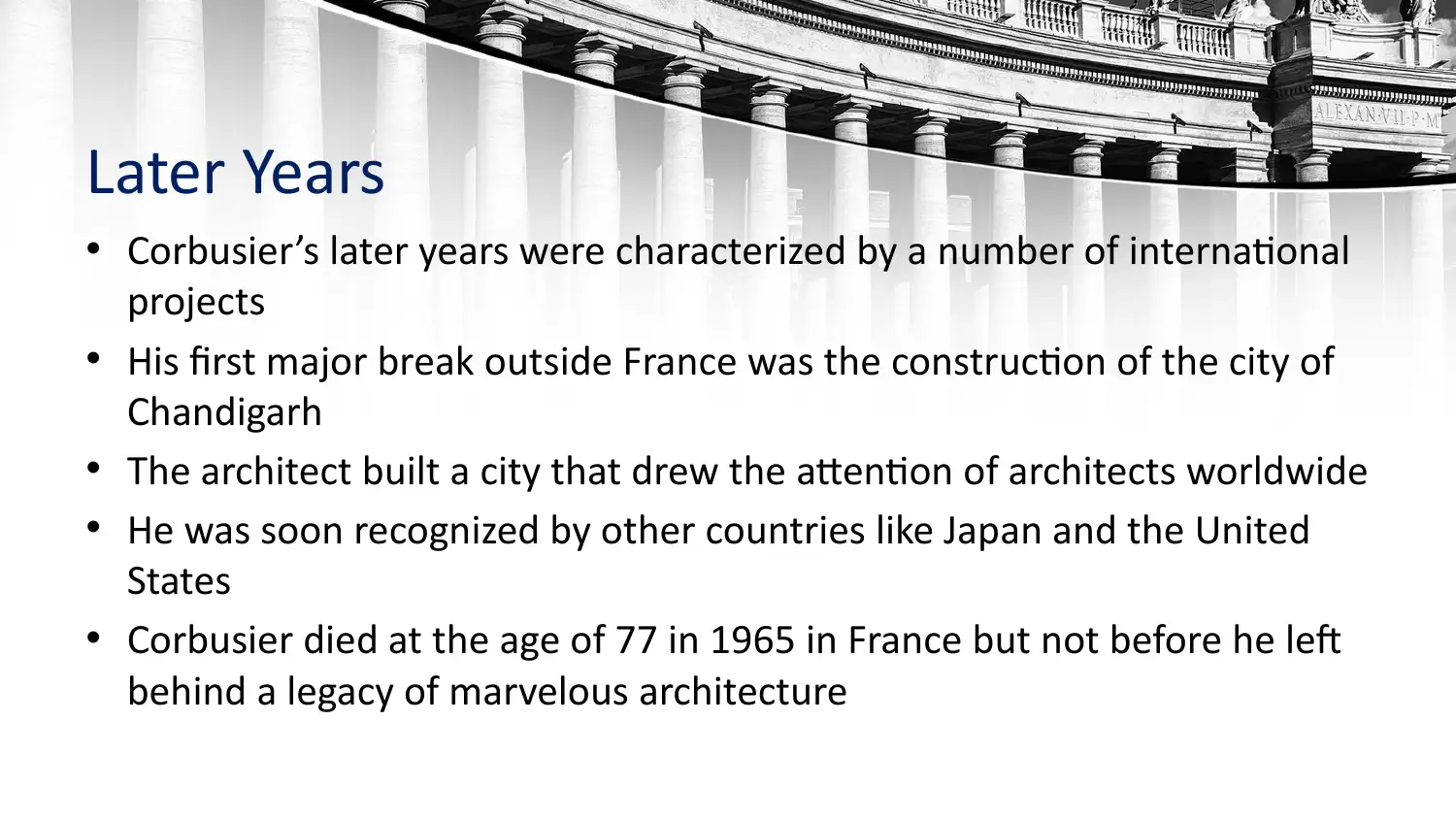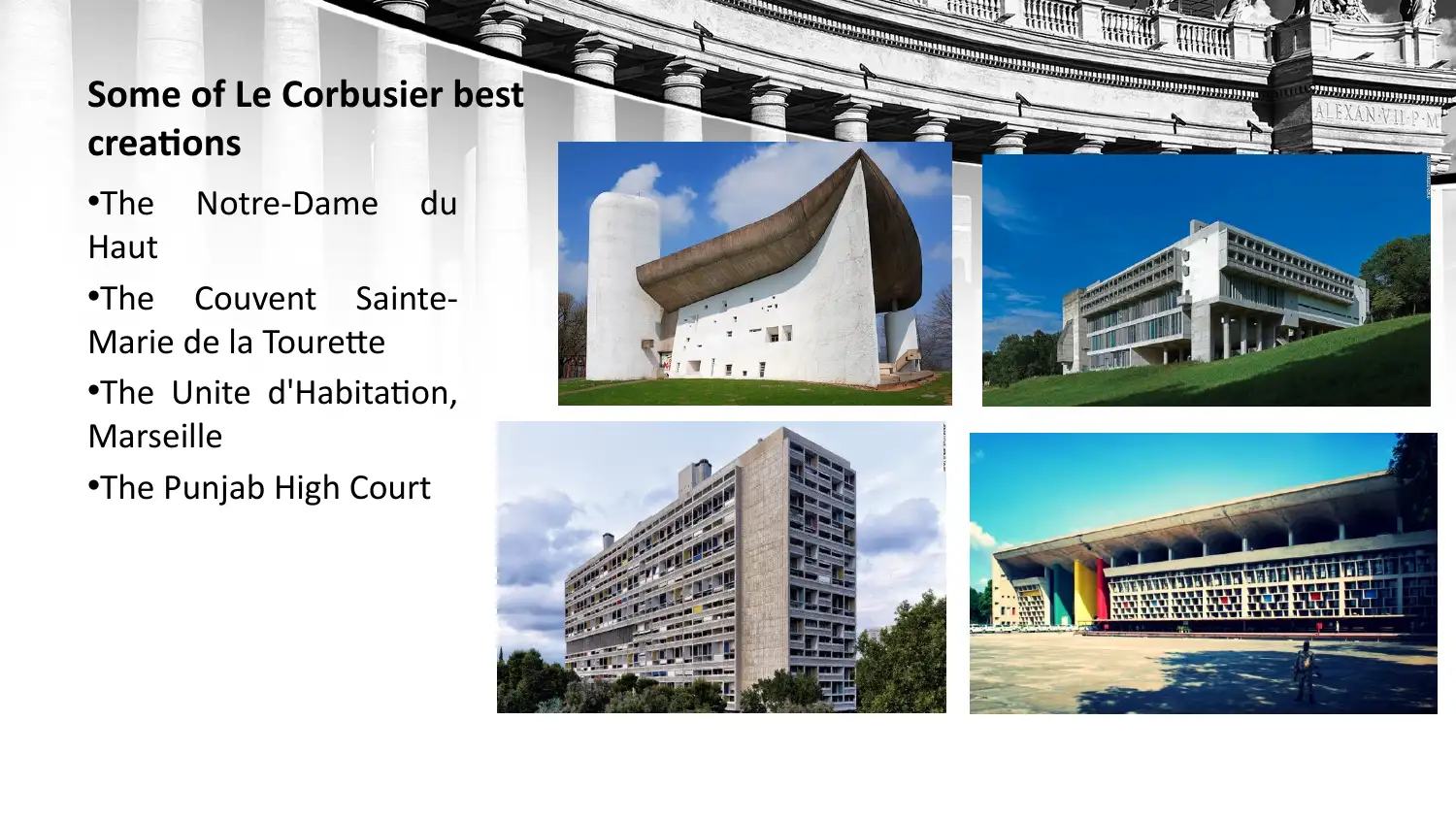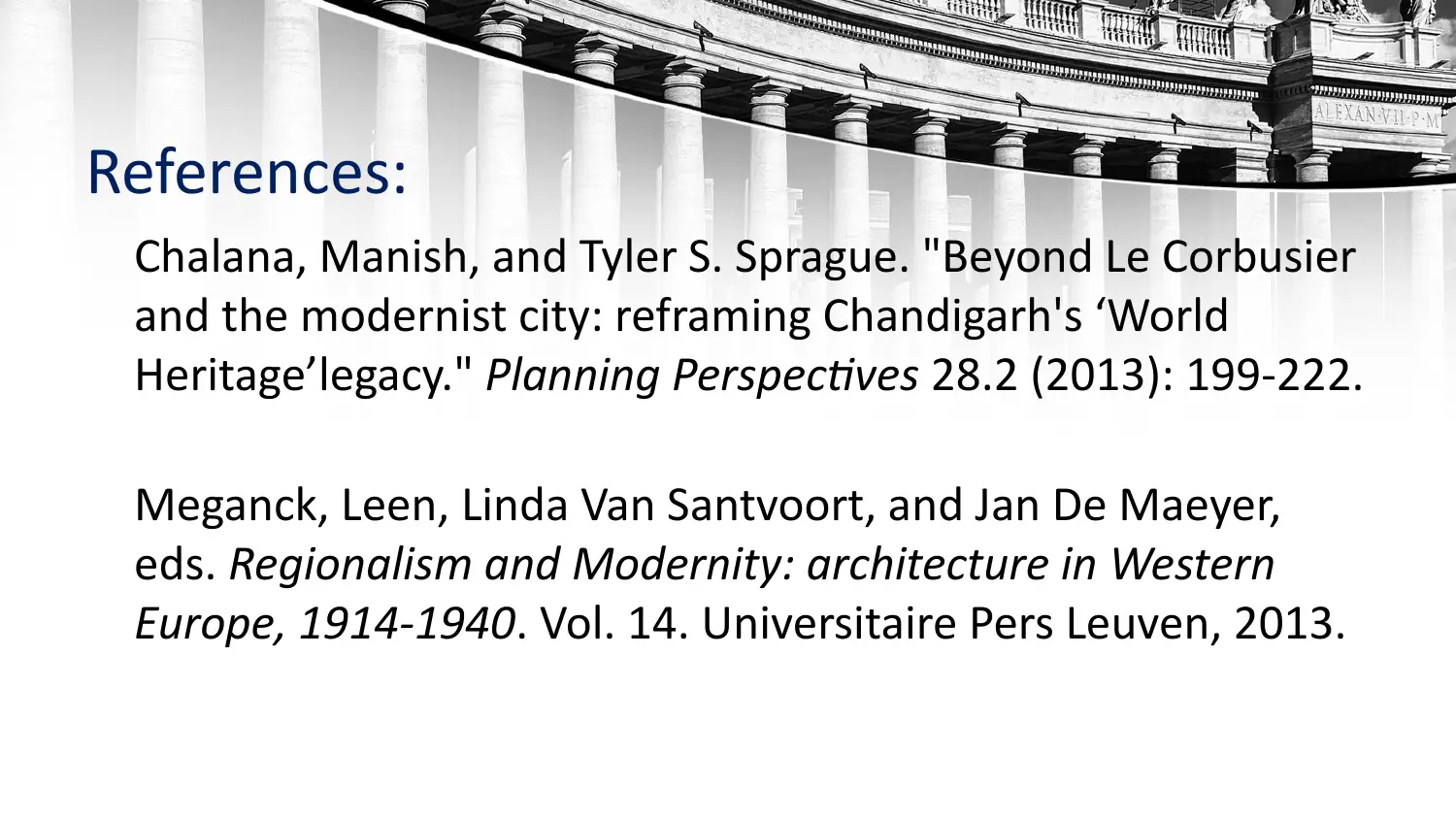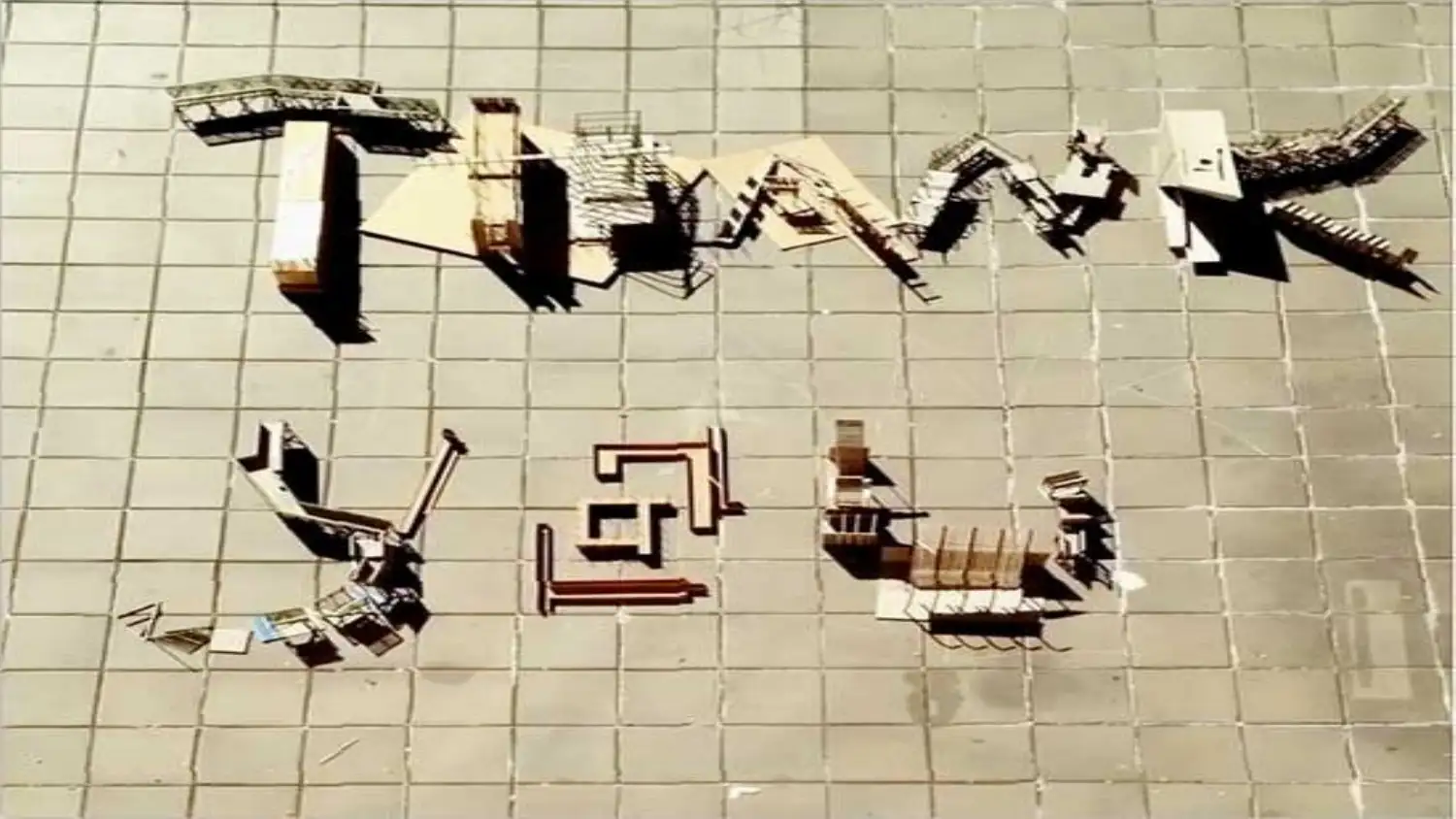Analyzing the Architectural Legacy: The Life and Works of Le Corbusier
VerifiedAdded on 2023/06/10
|9
|398
|449
Presentation
AI Summary
This presentation provides an overview of the life and architectural works of Le Corbusier, a highly influential figure in modern architecture. Born in Switzerland in 1887, Le Corbusier's career took off in the 1920s, marked by a blend of functionalism and sculptural expressionism, and his pioneering use of rough-cast concrete. The presentation highlights his initial years, the formation of the International Congresses of Modern Architecture (CIAM), and later international projects, including the city of Chandigarh. Key creations such as Notre-Dame du Haut, Couvent Sainte-Marie de la Tourette, and Unite d'Habitation are showcased, underscoring his lasting legacy. The presentation references academic works that provide further insight into Le Corbusier's impact and contributions to architecture and urban planning.
1 out of 9
